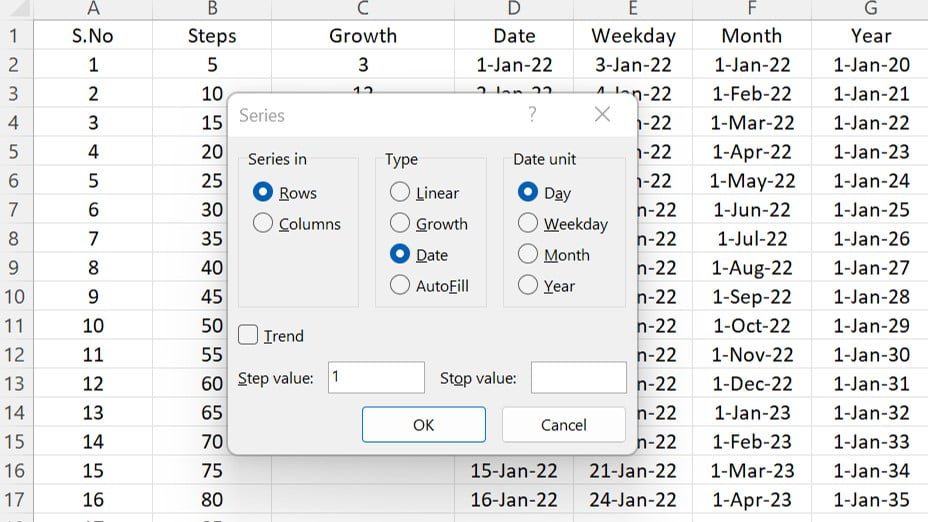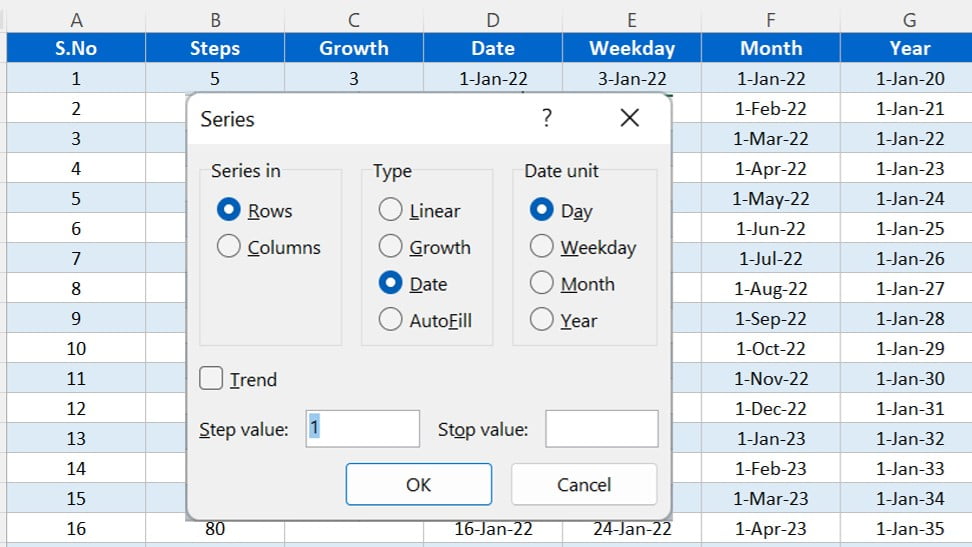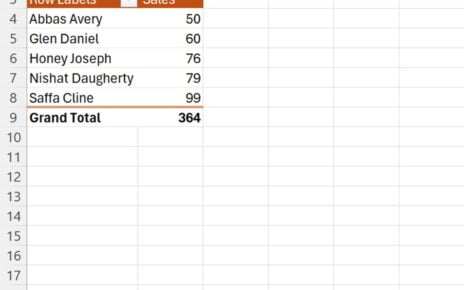Microsoft Excel is a powerful tool that helps users organize and analyze data efficiently. One of the many useful features in Excel is the Fill Series option, which enables users to quickly fill cells with a sequence of values or dates. In this article, we will provide a detailed guide on how to use the Fill Series feature in Excel, exploring its key features, advantages, limitations, and sharing some tips and tricks.
What is Fill Series in Excel?
Fill Series in Excel is a feature which allows users to quickly fill a range of cells with a proper sequence of values or dates. This is extremely helpful when you are creating a list of consecutive numbers, dates, or even formulas. Fill Series can save time and improve accuracy by automating the process of entering data in a series.

Shortcut Key
Using the Fill Series function in Excel is simple and efficient with the help of shortcut Keys. Press Alt+E+I+S to access the Fill Series dialog box.
Key Features in Fill Series:
There are a lot of features in The Fill Series dialog box to help users create and customize their series. These features include Series In, Type, Date Unit, and Trend. Below is the explanation for each feature-
Series In:
Excel allows users to create a series in two different orientations – Rows and Columns.
Rows:
When creating a series in rows, Excel will fill the series horizontally, extending it from left to right. To use this option, select the “Rows” radio button in the Fill Series dialog box.
Columns:
Alternatively, users can create a series in columns, which will fill the series vertically from top to bottom. To use this option, select the “Columns” radio button in the Fill Series dialog box.
Type:
Excel offers four types of series that users can create using the Fill Series feature: Linear, Growth, Date, and Autofill.
Linear:
A linear series increases or decreases by a constant value. For example, a series of consecutive numbers (1, 2, 3, 4, etc.) is a linear series. To create a linear series, select the “Linear” radio button in the Fill Series dialog box.
Growth:
A growth series multiplies the previous value by a constant factor. This type of series is useful for calculating compound interest or exponential growth. To create a growth series, select the “Growth” radio button in the Fill Series dialog box.
Date:
A date series fills excel cells with consecutive dates or dates separated by a specific interval. Excel offers several date units, such as days, weekdays, months, and years, to customize the date series. To create a date series, select the “Date” radio button in the Fill Series dialog box.
Autofill:
The Autofill feature detects a pattern in the selected cells and continues the pattern in the series. This is useful for filling in custom lists, such as months or weekdays. To use Autofill, select the “Autofill” radio button in the Fill Series dialog box.
Date Unit:
There are four different date unit as given below-
Day:
This option creates a series of consecutive days. To use this option, select the “Day” radio button in the Fill Series dialog box.
Weekday:
This option creates a series of weekdays, excluding weekends. To use this option, select the “Weekday” radio button in the Fill Series dialog box.
Month:
This option creates a series of consecutive months. To use this option, select the “Month” radio button in the Fill Series dialog box.
Year:
This option creates a series of consecutive years. To use this option, select the “Year” radio button in the Fill Series dialog box.
Trend:
The Trend feature allows users to create a series based on a linear or exponential trend using existing data points. This can be useful for predicting future values based on historical data.
Step and Stop value:
In the Fill Series dialog box, users can specify the step value and stop value for their series. The step value determines the increment or decrement between values in the series, while the stop value specifies the maximum value the series should reach.
Tips and Tricks of using Fill Series in Excel:
- Use the shortcut keys (Alt+E+I+S) to quickly access the Fill Series dialog box.
- To create a simple series without opening the dialog box, select the cell containing the starting value, drag the fill handle (bottom-right corner of the cell) across the desired range, and release the mouse button.
- For custom lists, such as days of the week or months, type the first few items and use Autofill to complete the series.
- Experiment with different types and date units to create the perfect series for your needs.
- Use the Trend feature to predict future values based on existing data points.
Advantages of Fill Series in Excel:
- Saves time and effort by automating the process of entering data in a series.
- Improves accuracy by eliminating the possibility of manual errors.
- Offers customization options to create different types of series.
- Helps in forecasting and predicting future values based on historical data.
Limitations of Fill Series in Excel:
- May not always detect the correct pattern when using Autofill, especially with complex or irregular patterns.
- Limited to linear and exponential growth for the Trend feature, which may not suit all types of data.
- Can only fill series in adjacent cells, which may not be suitable for all scenarios.
Conclusion:
The Fill Series feature in Excel is a powerful and versatile tool that can significantly improve productivity and accuracy when working with data. By understanding and utilizing the various options available, users can create custom series tailored to their specific needs. Although the feature has some limitations, its advantages far outweigh these constraints, making it an indispensable function for Excel users.
Frequently Asked Questions:
Q. Can I use Fill Series to fill non-adjacent cells?
A. Unfortunately, the Fill Series feature only works with adjacent cells. You may need to manually enter data or use other Excel functions to work with non-adjacent cells.
Q. How do I create a series of negative numbers?
A. To create a series of negative numbers, simply use a negative step value in the Fill Series dialog box.
Q. Can I fill series based on more complex patterns?
A. The Autofill feature can handle some complex patterns, but still its capabilities are limited. For more complex patterns, you may need to use other Excel functions or manually enter the data.
Watch the step-by-step video tutorial:
Click here to download the practice file.



